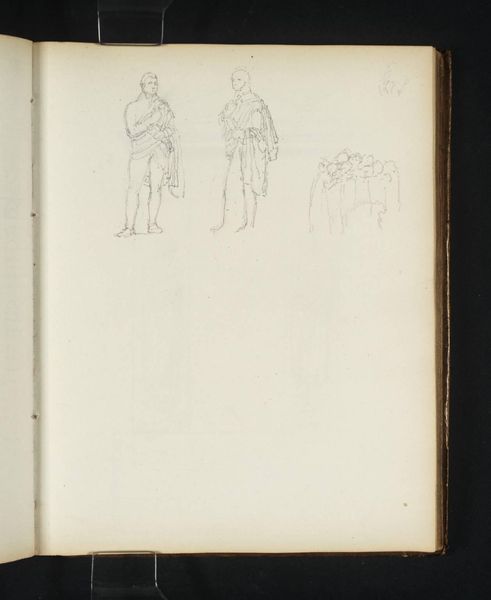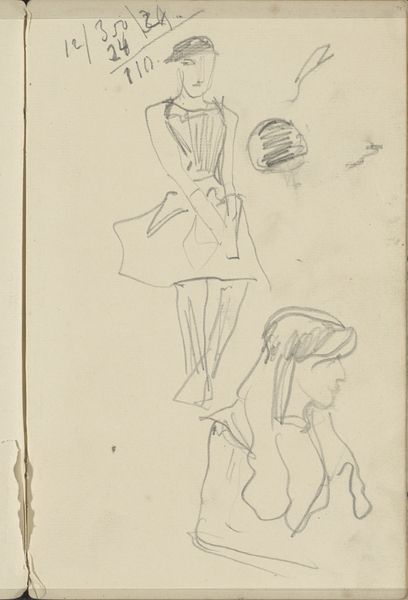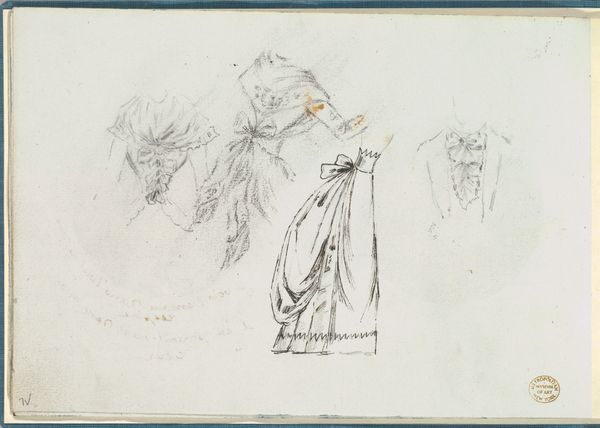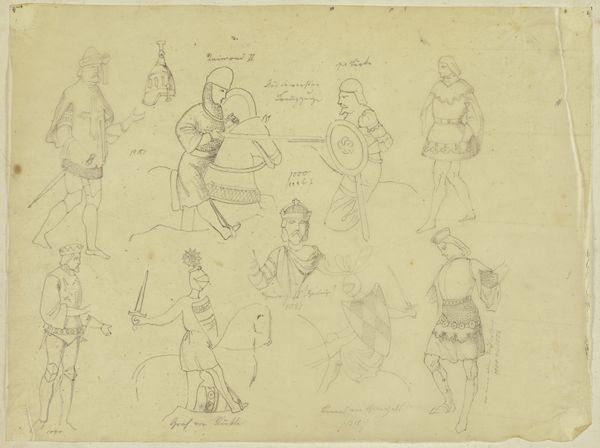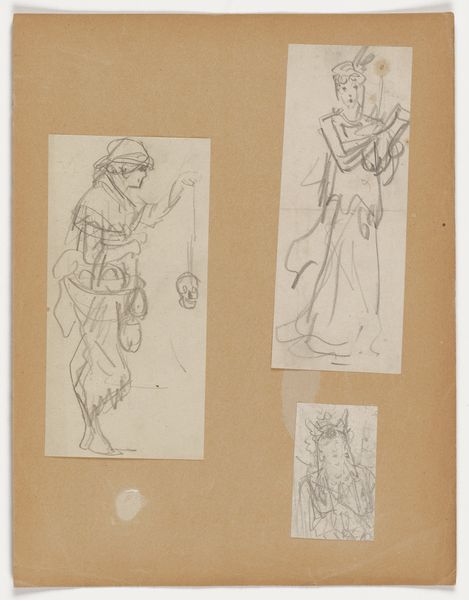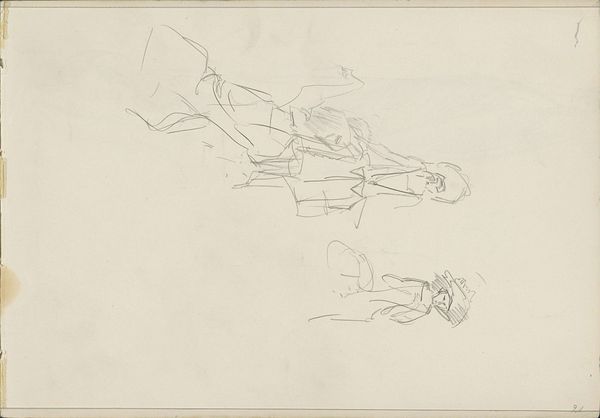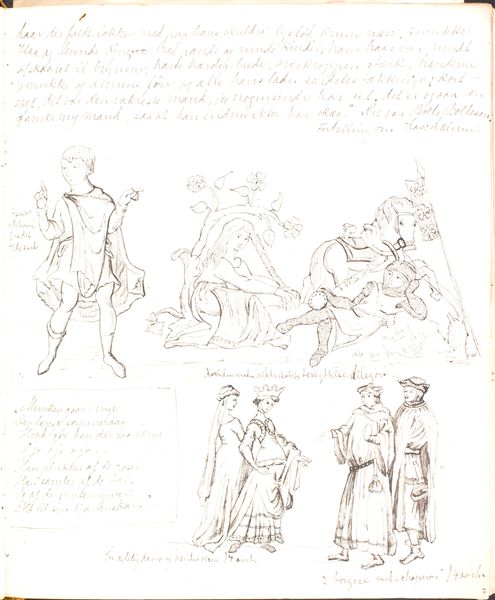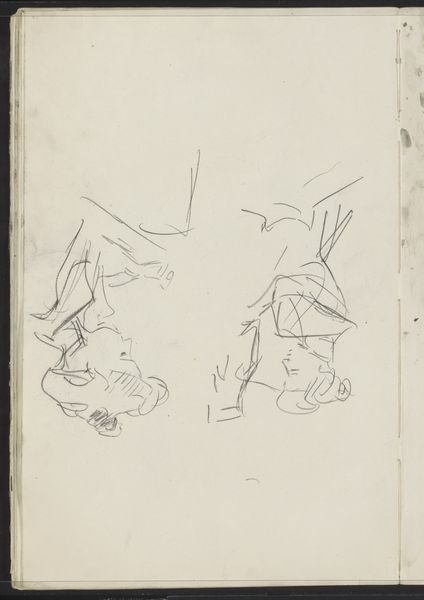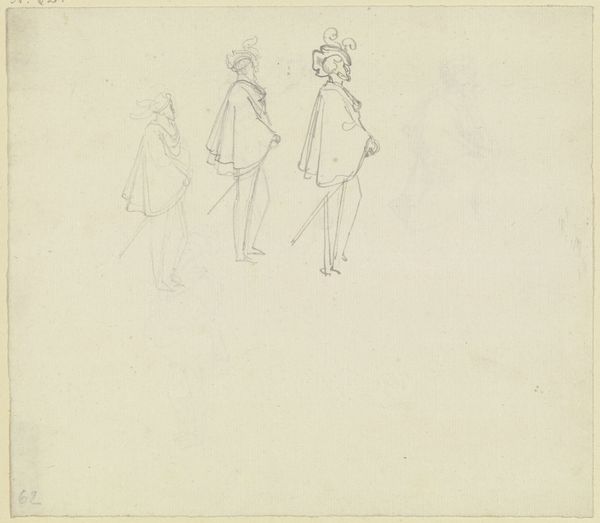
drawing, pencil
#
portrait
#
drawing
#
16_19th-century
#
romanticism
#
pencil
#
academic-art
Copyright: Public Domain
Artist: These gentlemen, so precisely sketched! My first thought is they're lost in reverie. Are they waiting for a parade, a battle...or perhaps simply daydreaming on a day off? Curator: We're looking at "Studienblatt Schütze in Rödelheim" or "Study Sheet of Shooters in Rödelheim", an 1831 pencil drawing by Carl Morgenstern, held here at the Städel Museum. It feels more like a glimpse into 19th-century civic life than a formal portrait, doesn’t it? Artist: Yes, absolutely! It feels like a memory, capturing them so simply, economically, with just a few strokes, like holding the ghost of a moment right there on the page. The unfinished landscape to the left reinforces this impression of memory or potential, perhaps. Curator: Rödelheim was near Frankfurt. These shooters were likely part of a Bürgerwehr—a citizen militia—quite common then. These groups played a significant, often overlooked role, acting as both security and a symbol of civic identity at a time of rising nationalism and evolving class structures. They embodied ideals, yes, but their makeup often reflected existing social hierarchies. Artist: How fascinating. Knowing they're a civic guard makes me rethink that dreamy atmosphere. Perhaps it’s more anticipation now, waiting with purpose. The soft pencil lines still suggest such humanity. Look at the nuances of each uniform. Their headgear is particularly individualized. Curator: Exactly. Their attire reveals something of the social and political climate. Uniforms projected power but also demanded a certain conformity, highlighting the tensions between individual expression and collective identity. Artist: I appreciate how the medium mirrors this balance too: the rigid discipline suggested by military poses countered by the loose, vulnerable quality of pencil on paper. Did Morgenstern choose it deliberately, do you think? Curator: It’s a compelling possibility. Pencil drawings at that time allowed a sense of immediacy, the hint of preparation rather than polished, finished form. As a study piece, the technique allows us to look more intimately into the artist's methods while drawing closer to those represented. Artist: These aren't just figures rendered academically. These are thoughtful individuals ready for some adventure! Maybe not adventure, more civic duty... and, perhaps, still, some hope! Curator: I see what you mean; it speaks to art's ability to humanize history. It's easy to forget individuals are enacting change on grand scales. The slight softness, the humanity that lingers – very moving indeed!
Comments
No comments
Be the first to comment and join the conversation on the ultimate creative platform.
